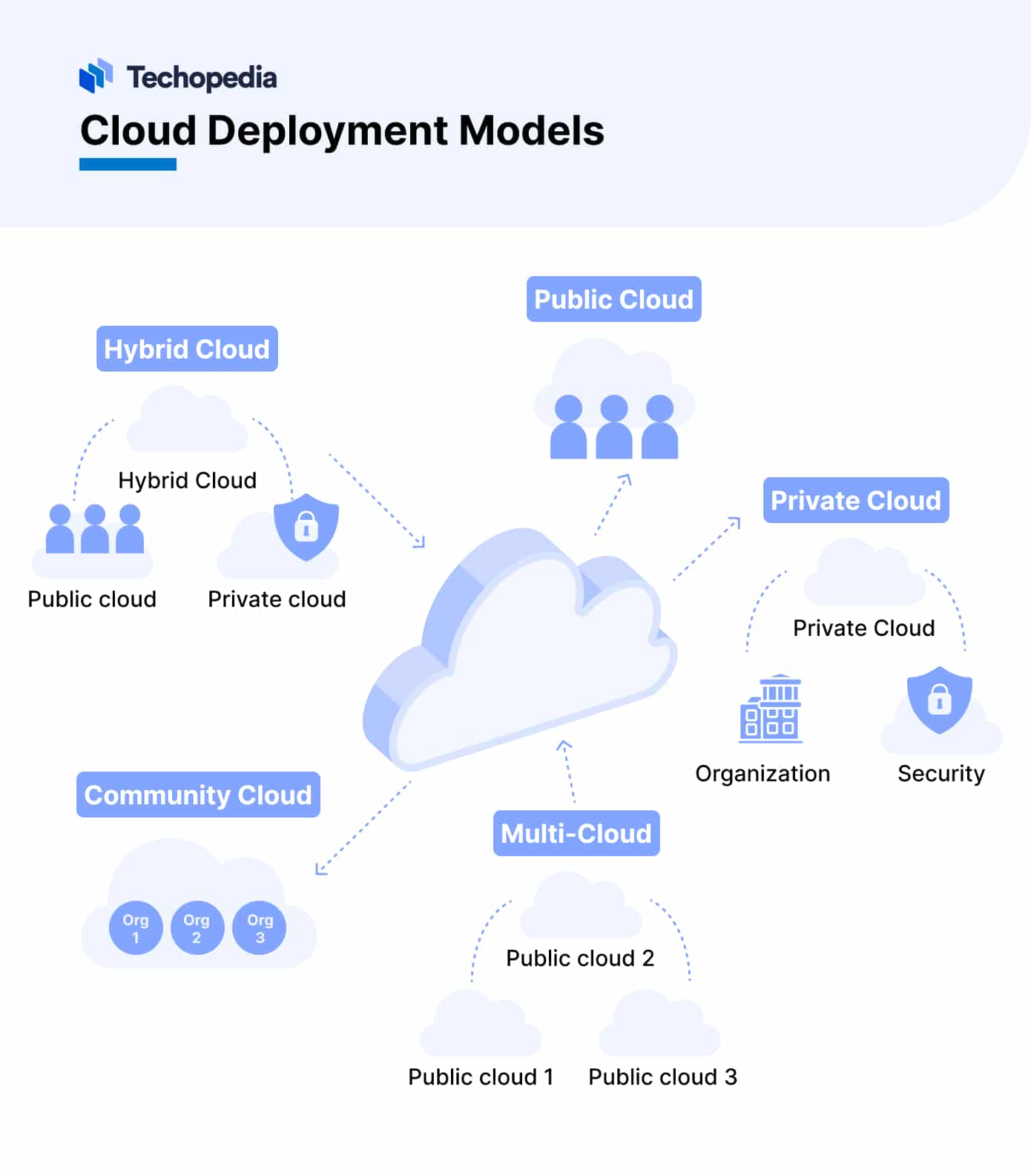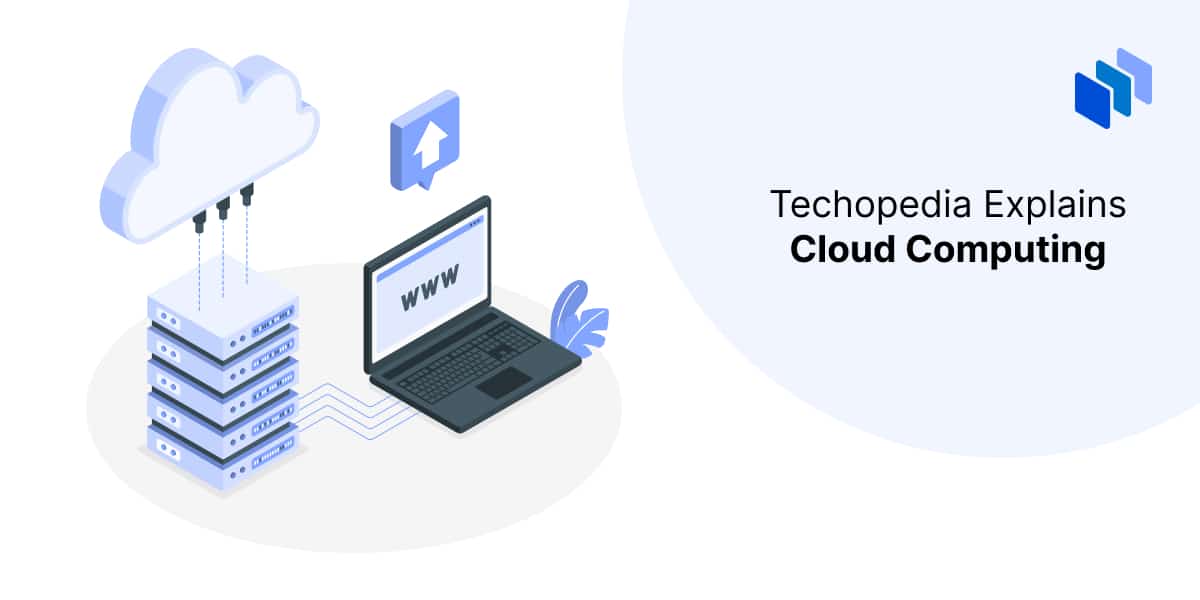What is Cloud Computing?
Cloud computing is a delivery model for providing on-demand information technology (IT) infrastructure and services over the Internet. Cloud services are scalable, which means that compute, networking, and storage resources can be adjusted manually or automatically in real time to meet the changing demands of applications and users. Customers can access and use cloud services through freemium, subscription, or consumption-based pricing models.
Essentially, a cloud computing environment has five important characteristics that differentiate it from a traditional in-house, local computing environment:
- The customer can provision computing resources by themselves on demand.
- Resources are provisioned and accessed over the Internet.
- Resources are pooled together to serve the needs of multiple customers.
- Resources can be rapidly scaled horizontally or scaled down depending on need.
- Resource use is controlled by the customer and can be monitored in real-time.
The cloud delivery model is particularly beneficial for startups and small to medium-sized businesses (SMBs) that do not have the financial resources to support complex IT infrastructure and services. It also appeals to large enterprises that want to outsource specific information and communications technology (ICT) services so they can focus more on core business activities.
Techopedia Explains the Cloud Computing Meaning

It’s important to remember that while cloud computing definitions are related to the Internet, the terms “cloud” and “Internet” should not be used as synonyms.
- The Internet is a global network for communication and data exchange.
- The cloud is a metaphor for delivering IT services over the Internet.
Network diagrams use a cloud-shaped icon to represent the internet. Over time, this standard practice has caused some people to think that “cloud” and “Internet” can be used interchangeably. For example, someone might say, “My photos are stored on the Internet,” when what they really mean is that their photos are stored in the cloud. In this context, the cloud is a remote data center that is owned and managed by a third-party service provider.
History of Cloud Computing
The concept of cloud computing has been around since 1959, when John McCarthy, the computing pioneer who is credited with coining the term artificial intelligence (AI), envisioned time-sharing systems that allowed customers to purchase compute resources as a utility.
At MIT’s centennial celebration in 1961, McCarthy predicted that in the future, “Each subscriber needs to pay only for the capacity he actually uses … Certain subscribers might offer service to other subscribers …and the computer utility could become the basis of a new and important industry.”
Around the same time, IBM helped develop strategies for logically segmenting their mainframe computers so they could serve multiple clients. Each client viewed the mainframe’s resources as if they were the sole user – when in reality, they were time-sharing resources with other users.
By the late 1980s, organizations began to understand that instead of buying or leasing expensive big iron computers, they could purchase a number of relatively inexpensive personal computers (PCs) and network them together so they functioned like one machine. It wasn’t until the late 1990s, however, that the idea of using the Internet to connect distributed networks of commodity hardware became financially viable. This advancement helped turn the concept of cloud computing into a realistic delivery model.
Milestones for using cloud computing in business include:
| 1999 | Salesforce introduced the idea of delivering enterprise software over the Internet. |
| 2002 | Amazon Web Services (AWS) began to offer basic storage and computing services. |
| 2006 | AWS launched Elastic Compute Cloud (EC2) and Simple Storage Service (S3) with a pay-per-use business model for virtual computing and storage resources. |
| 2006 | Google Apps (now called Google Workspace) introduced cloud-based productivity suites. |
| 2008 | Google launched App Engine to provide developers with tools for building scalable web applications on Google’s infrastructure. |
| 2010 | Microsoft released Microsoft Azure. |
| 2010 | Rackspace Hosting and NASA launched the OpenStack project. |
| 2012 | Oracle announced Oracle Cloud. |
| 2013 | VMware announced vCloud Hybrid Services, which could integrate on-premises data centers with the cloud. The service is now called VMware Cloud. |
| 2014-2016 | Major providers like AWS, Microsoft Azure, and Google Cloud Platform (GCP) expanded their services to support Internet of Things (IoT) initiatives and meet infrastructure requirements for artificial intelligence and machine learning (ML). |
| 2015 | The adoption of container technology for cloud application deployments became more commonplace. |
| 2017-2019 | Hybrid cloud and multi-cloud strategies gained popularity. The need for edge computing became more apparent. |
| 2020-2022 | The COVID-19 pandemic accelerated cloud adoption as organizations shifted to remote work. |
| 2023-2024 | Cloud providers began offering special hardware and software to train and deploy AI models at scale. Cloud security, privacy, and the expansion of serverless computing remain top priorities for cloud providers and their customers. |
How Cloud Computing Works
Cloud technology allows individuals and businesses to access and use computing resources like servers, storage, and software over the Internet. Physical resources are virtualized and delivered to users as a service that can be scaled up or down according to demand.
For example, if a company’s website experiences a traffic surge, the cloud provider can allocate more compute resources in real time to handle the increase and ensure that the website remains accessible without interruption. Similarly, when demand decreases, resources can be scaled down to reduce costs.
Users typically interact with a cloud provider’s services through a web interface or application programming interface (API) dashboard. Some cloud providers also allow developers or advanced users to use command-line interface (CLI) interactions. Behind the scenes, the provider is responsible for keeping their customers’ data secure and making sure the underlying software and hardware infrastructure is robust and up-to-date.
Cloud Computing Components
Cloud computing services are supported by physical and virtual components that allow the service provider to deliver scalable, flexible, and efficient computing resources over the Internet.
Data Centers: These are physical facilities that house the infrastructure required to provide cloud services.
Servers: These are computers that provide the computational power required for processing and executing applications.
Storage: This includes the physical devices where data is stored, as well as the software that’s used to manage how the stored data is organized, accessed, and protected.
Network Infrastructure: This includes routers, switches, and cabling that connects data centers to the Internet and manages the flow of data between servers, software applications, and end-users.
Virtualization Management Software: This is software that allows physical hardware resources to be logically partitioned and shared.
Cloud Management Software: This is software that is used to manage resource provisioning, deployment, and orchestration.
Containers: These are lightweight virtual environments that encapsulate an application and its dependencies so that software will run consistently across different computing environments.
Cloud Service Models: These are services that can abstract the underlying physical infrastructure and provide users with computational resources, platforms for application development, or software applications over the Internet.
Types of Cloud Computing
Cloud computing services are usually categorized by their deployment model or their service model, each of which serves different needs and has different use cases.
Types of deployment models include:

Source: spiceworks
Types of service models include:
Cloud Deployment Models
Cloud computing deployment models define how cloud services are delivered to and accessed by the provider’s customers. Deployment models include:
- Public Cloud – allows resources to be accessed by authorized subscribers.
- Private Cloud – restricts resource access to a specific group or organization.
- Community Cloud – allows resources to be shared among two or more organizations.
- Hybrid Cloud – integrates two or more cloud environments.
- Multi-Cloud – uses multiple cloud services from different cloud providers to optimize performance, flexibility, cost control, or resilience.
Cloud Computing Use Cases
The cloud delivery model is particularly beneficial for startups and small to medium-sized businesses (SMBs) that do not have the financial resources to support complex IT infrastructure and services. It also appeals to large enterprises that want to outsource specific information and communications technology (ICT) services so they can focus more on core business activities.
Cloud computing has played a significant role in digital transformation. In the past ten years, the delivery model has significantly reduced IT costs and complexity and changed the way individuals and organizations access and use technology.
One of the earliest use cases for cloud computing was in web hosting and e-commerce platforms. Cloud services provide scalable, on-demand resources that can handle varying levels of website traffic and ensure high availability (HA) and robust network performance without the need for extensive physical infrastructure.
Another significant use case has been data backup and disaster recovery. Cloud storage is off-site, and this can help ensure business continuity. The geographical separation is important because it protects data from local disasters (such as fires, floods, or hardware failures) that could potentially destroy on-premises data backups. Because data stored in the cloud can be accessed from anywhere at any time (provided there is Internet connectivity), businesses can quickly recover their data and resume operations even if their primary site is compromised.
Cloud resources are also used to provide the computational power and storage capacity needed to analyze big data and make data-driven decisions. This is why cloud services are used to train machine learning (ML) models and deploy large language models (LLMs) and multimodal AI applications.
Development and testing environments hosted in the cloud offer allow developers to quickly spin up or tear down environments as needed, which can facilitate iterative development and help drive innovation. Additionally, the cloud supports the deployment and management of Internet of Things (IoT) applications by providing a platform that can be used to collect, analyze, and store data from hundreds, or even millions of connected devices.
Moreover, the cloud has become indispensable for supporting remote work and online collaboration by offering cloud-based productivity suites like Microsoft 365 and project management tools that enable teams to work together seamlessly from any location.
Cloud Computing vs. Edge Computing
In the edge computing delivery model, cloud services are deployed near end-users and IoT devices, through a distributed infrastructure. Edge computing can alleviate the data processing load on central cloud services and permit more efficient resource use.
Locating cloud services as close to data sources as possible can significantly reduce latency, conserve bandwidth, and improve response times.
Edge clouds are particularly beneficial for Industrial Internet of Things (IIoT) applications and edge devices like autonomous vehicles that need to process data quickly in order to make a decision.
Cloud Computing Pros and Cons
Cloud computing is significantly changing the way businesses and individuals use information technology. Instead of investing in, managing, and maintaining physical hardware and software, organizations can rely on cloud providers to deliver IT resources on demand over the Internet.
It’s important to remember, however, that cloud service adoption also presents unique challenges. Organizations must carefully consider factors like vendor lock-in, the potential ramifications of third-party data breaches, the need for Internet connectivity, and compliance concerns regarding data sovereignty.
Pros:
- Scalability
- Flexibility
- Cost efficiency
- Accessibility
- Reliability
Cons:
- Security and privacy
- Vendor lock-in
- Potential for increased costs
- Dependence on Internet connectivity
- Compliance
The Bottom Line
Cloud computing can offer significant cost savings, scalability, and flexibility compared to traditional on-premises technology, but its use requires individuals and organizations to weigh the benefits of specific “IT-as-a-Service” models against potential risks.
FAQs
What is cloud computing in simple terms?
What are the 4 types of cloud computing?
What is an example of cloud computing?
What are cloud computing benefits?
References
- John McCarthy (The National Science and Technology Medals Foundation)
- The Cloud Imperative (MIT Technology Review)
- Google Workspace Official Website (Google)
- Transform Your Apps and Cloud Faster with VMware Cloud (VMWare)
- Google Cloud Official Website (Google)
- App Engine (Google Cloud)
- Cloud Functions (Google Cloud)
- What is a Virtual Desktop? (VMWare)






